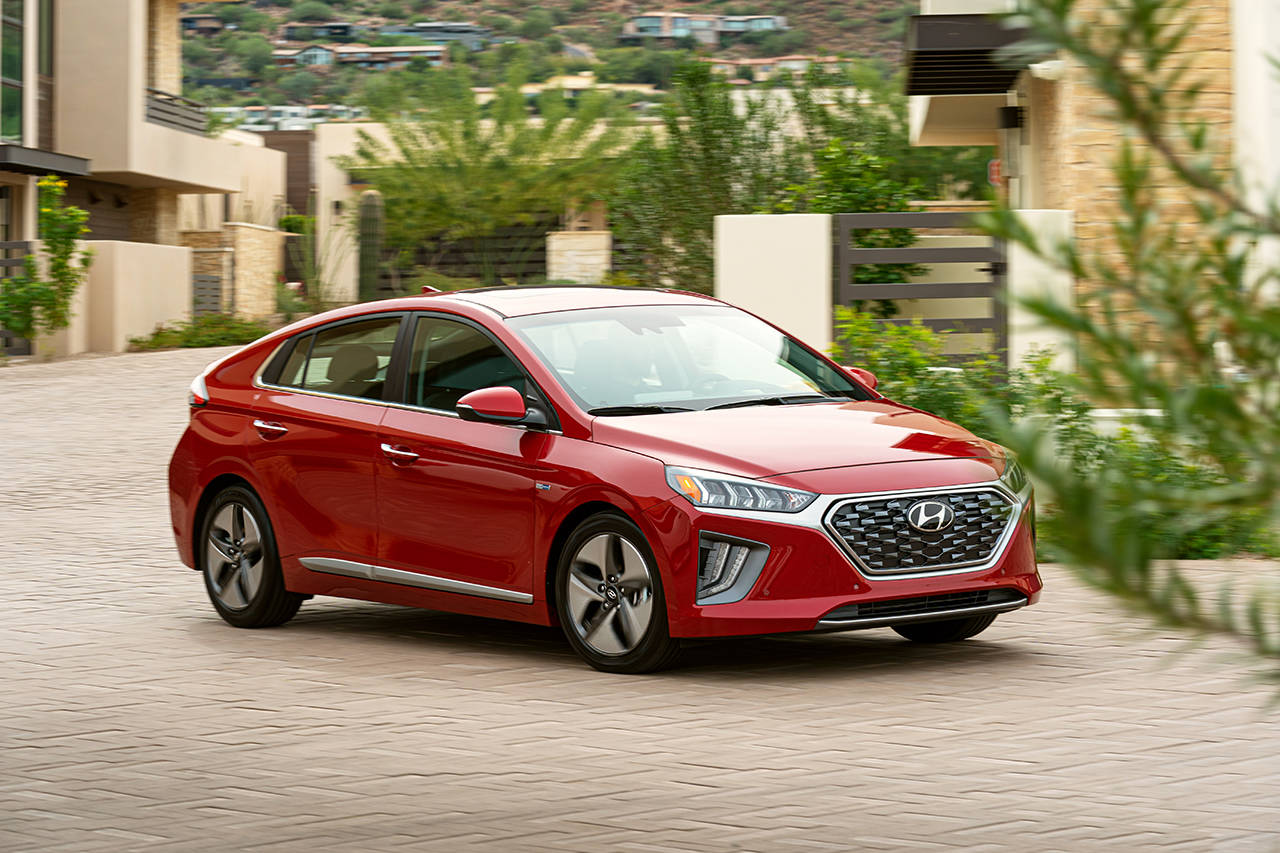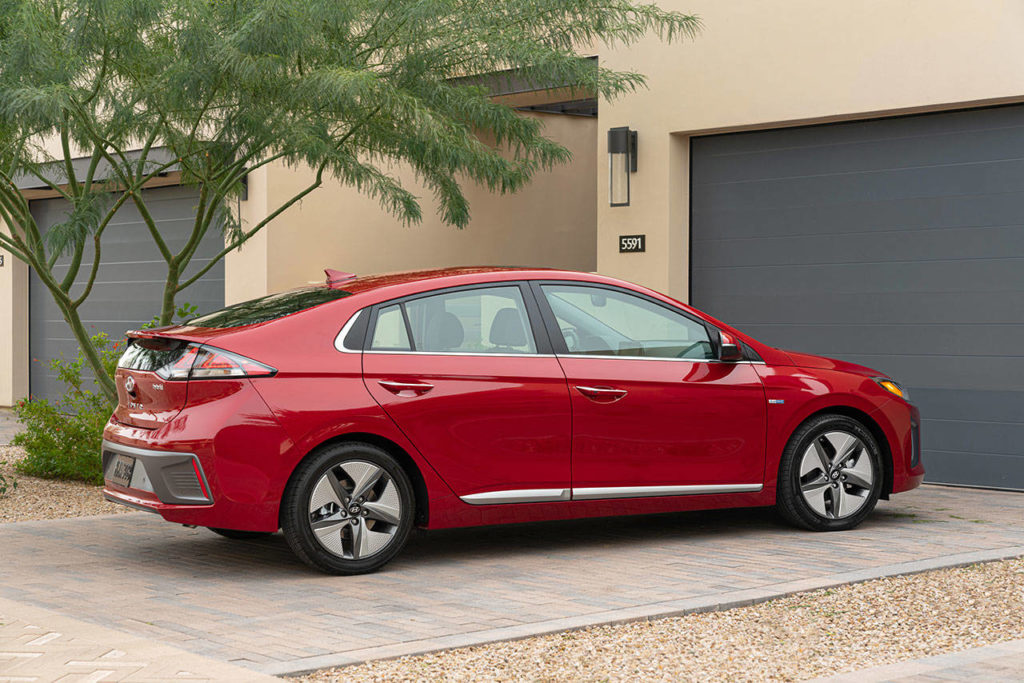Hyundai Motor announced in August the creation of a new Ioniq brand, concentrating on the production of battery electric vehicles to meet the burgeoning market demand. The company has a plan to sell a million units by 2025 to take a 10-percent share and become a leader in the global EV market.
The Ioniq name is a mash-up of “ion” and “unique.” In 2016, Hyundai introduced the current Ioniq compact five-door hatchback, available in all-electric (EV), hybrid, and plug-in hybrid (PHEV) versions.
Within the next four years, the Ioniq brand will launch three new vehicles. First up is the Ioniq 5 midsize SUV, making its appearance in early 2021. The Ioniq 6 sedan comes next, in 2022, and then the Ioniq 7 large SUV in early 2024.
Meanwhile, there are some updates to the existing Hyundai Ioniq for 2020. Hybrid and plug-in hybrid models have mild design modifications inside and out, including a new mesh grille and an 8-inch infotainment screen in place of the previous 7-inch version. A 10.25-inch system with navigation is newly available.
Driver-assistance features have been added including forward collision avoidance, automatic high-beam headlights, driver-attention warning, and lane-keeping.
Android Auto and Apple CarPlay are standard on all models.
My test car was an Ioniq plug-in hybrid (PHEV). This model comes in SE, SEL, and Limited trim levels, and pricing starts at $27,455 including a $955 destination charge. I drove the Limited model, priced at $33,905.
The Ioniq PHEV powertrain produces a combined 139 horsepower and has a 119 mpg(e) fuel economy rating. Its all-electric range is 29 miles, and gas-only mode delivers 52 mpg in combined city and highway driving. The total driving range is 630 miles.
A six-speed dual-clutch automatic transmission and front-wheel drive are standard. All-wheel drive is not available.
Using a 110- or 120-volt household power outlet, the Ioniq PHEV can be fully charged in about 9 hours. A 240-volt outlet gets the job done in about 2 hours.
The base SE model is well equipped, and the SEL adds such things as pedestrian detection and wireless charging. Opting for the Limited model gets you an eight-speaker Harman Kardon premium audio system, the 10.25-inch infotainment system with navigation, leather seats, and driver’s seat memory. The infotainment system’s interface is as user-friendly as the Ioniq is eco-friendly
During its week with me, the 2020 Ioniq PHEV proved to be an agreeable small car whose performance highlight is tremendous fuel economy. To be a better person and take full advantage of its environmental benefits, I kept the car in Eco mode all week except for a brief test of Sport mode, which turns Ioniq into a different performer altogether but also reduces fuel economy. Sport mode is good to have when extra boost is necessary, though.
Cargo space behind the rear seats is 23 cubic feet, and the seats easily fold down to near flat for carrying larger and longer items.
The Ioniq PHEV makes sense for city or suburban dwellers, who tend to have nice garages they actually park their cars in, and they could conceivably drive forever on electric power alone. As a rural person, my garage functions as a residential stockroom, warehouse and grain elevator, and I could deplete the PHEV electric charge without even reaching a Starbucks. So, the Ioniq hybrid would be my Ioniq of choice.
The 2021 Hyundai Ioniq hatchback will be a carryover.
2020 HYUNDAI IONIQ PLUG-IN HYBRID LIMITED
Base price, including destination charge: $33,905
Price as driven: $34,040
Mary Lowry is an independent automotive writer who lives in Snohomish County. She is a member of the Motor Press Guild, and a member and past president of the Northwest Automotive Press Association. Vehicles are provided by the manufacturers as a one-week loan for review purposes only. In no way do the manufacturers control the content of the reviews.
Talk to us
> Give us your news tips.
> Send us a letter to the editor.
> More Herald contact information.



























